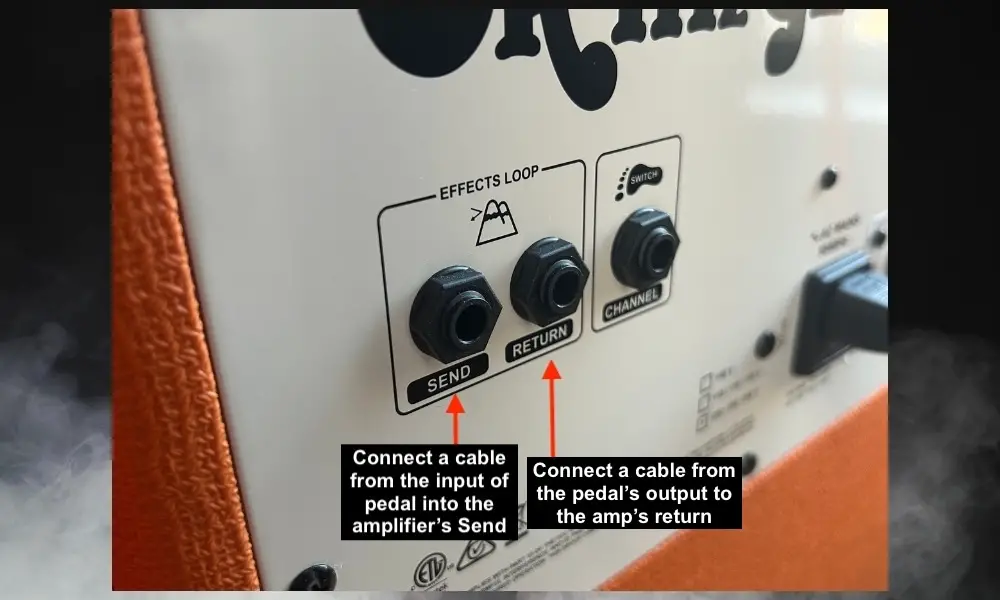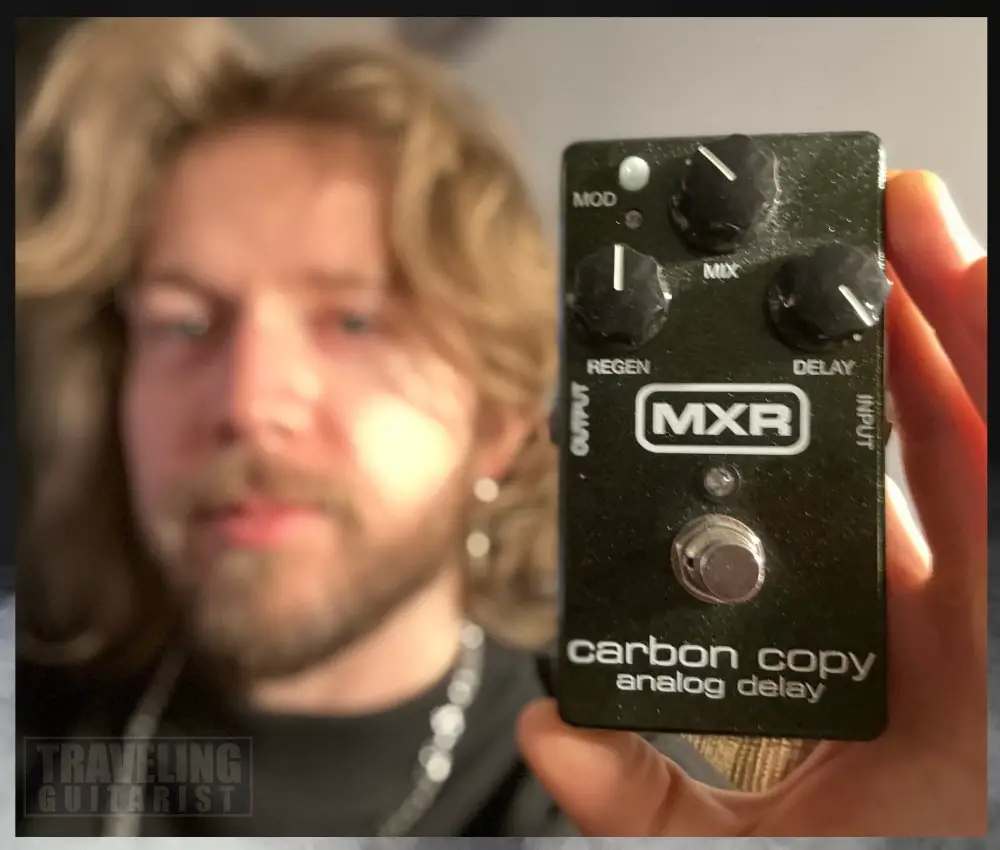Where’s the best place in the signal chain to put the delay? Is it best to set it up in front of the amplifier or behind the amp in the FX Loop? If you ask me, there are two ways to place it.
Generally speaking, it’s best to put a delay pedal at the start of the FX Loop. This ensures a clear, transparent signal that’s unaffected by other pedals & the pre-amp. Another great place is near the end of your chain in front of your amp, before your reverb and looper pedal.
Tools Needed To Put Delay In Your FX Loop
1) An Amplifier With An Effects Loop (FX Loop)
Not all amplifiers come with FX Loops, although they’re becoming increasingly common. I love my Orange 35RT.
I’ve had it for close to a year now, and it’s perfect for recording. When it’s paired with a volume attenuator, it works great for a small apartment.
2) 2 1/4″ Instrument Cables (Guitar Cables Over 10 Feet Long)
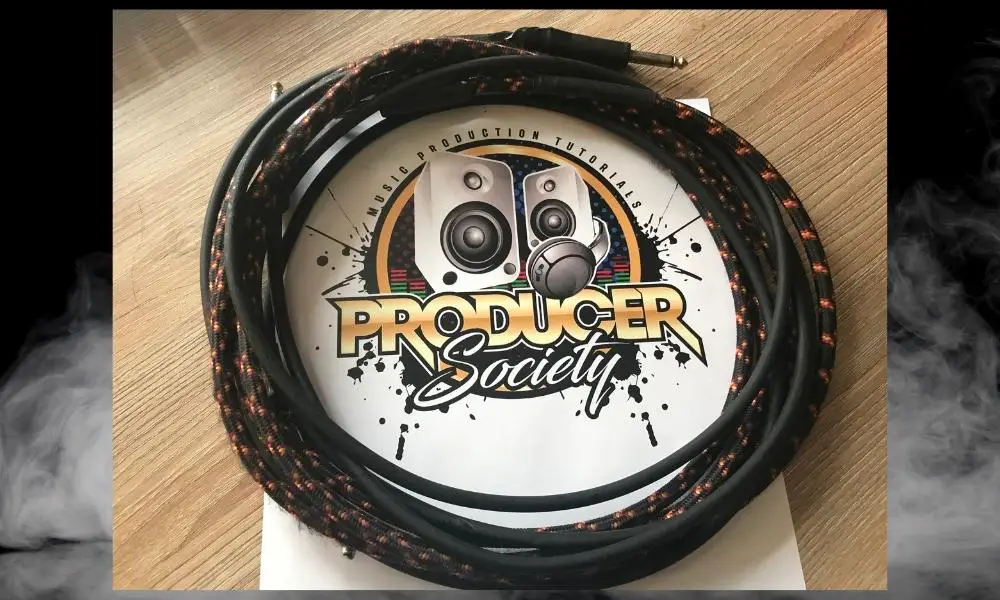
You’ll obviously need some standard ¼ inch jack guitar cables. A wise man once told me that it’s better to be too long than too short.
I’d go with at least 15-foot-long cables to give you the freedom to set up your delay wherever you want.
It makes sense to have much longer cables for the FX Loop because you want the ability to put your FX Loop pedals right with the rest of your pedals.
If you don’t have long enough cables, you’ll have to have your FX Loop pedals sitting much closer to the amp which is a nightmare, if you ask me.
3) A Delay Pedal
There are all kinds of delay pedals on the market for different players. The MXR Carbon Copy Delay is a firm favourite of mine and many others too.
How To Put A Delay Pedal In Your FX Loop
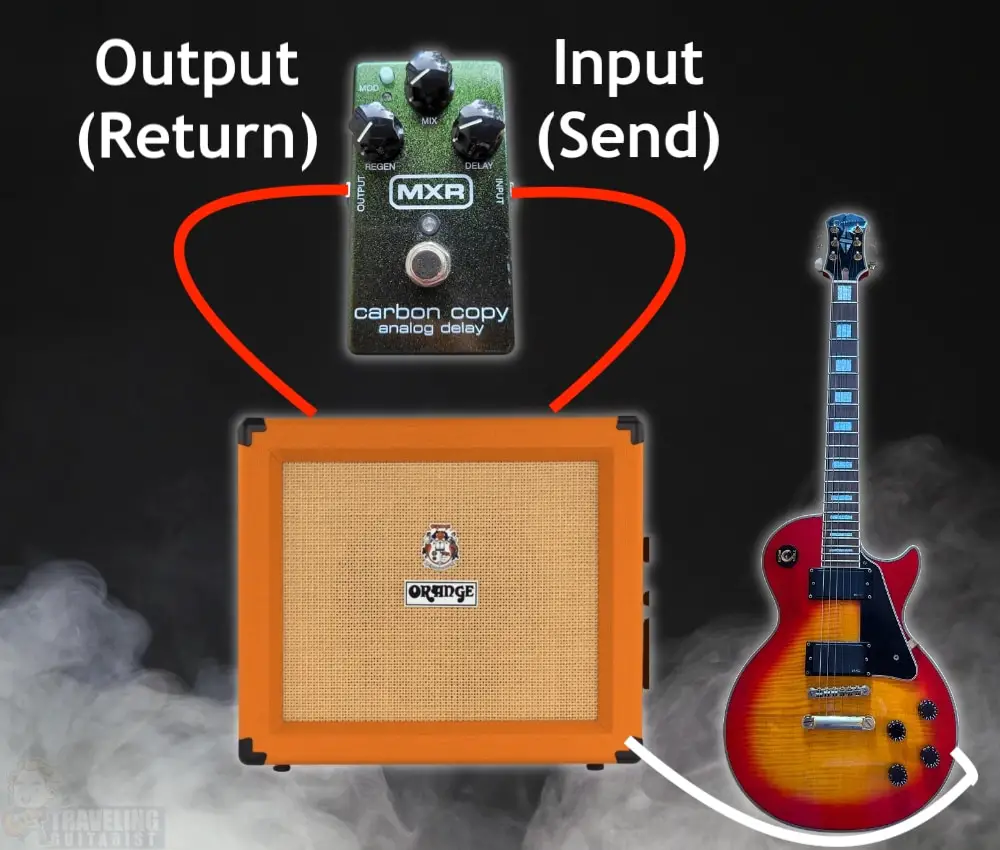
It’s as simple as running a cable from the Output of your pedal to the Return in the FX Loop and a cable from the Input of the pedal to the Send of the FX Loop. Here’s the step-by-step.
1) Run A Cable From the Pedal’s ‘Output’ to the FX Loop’s ‘Return’
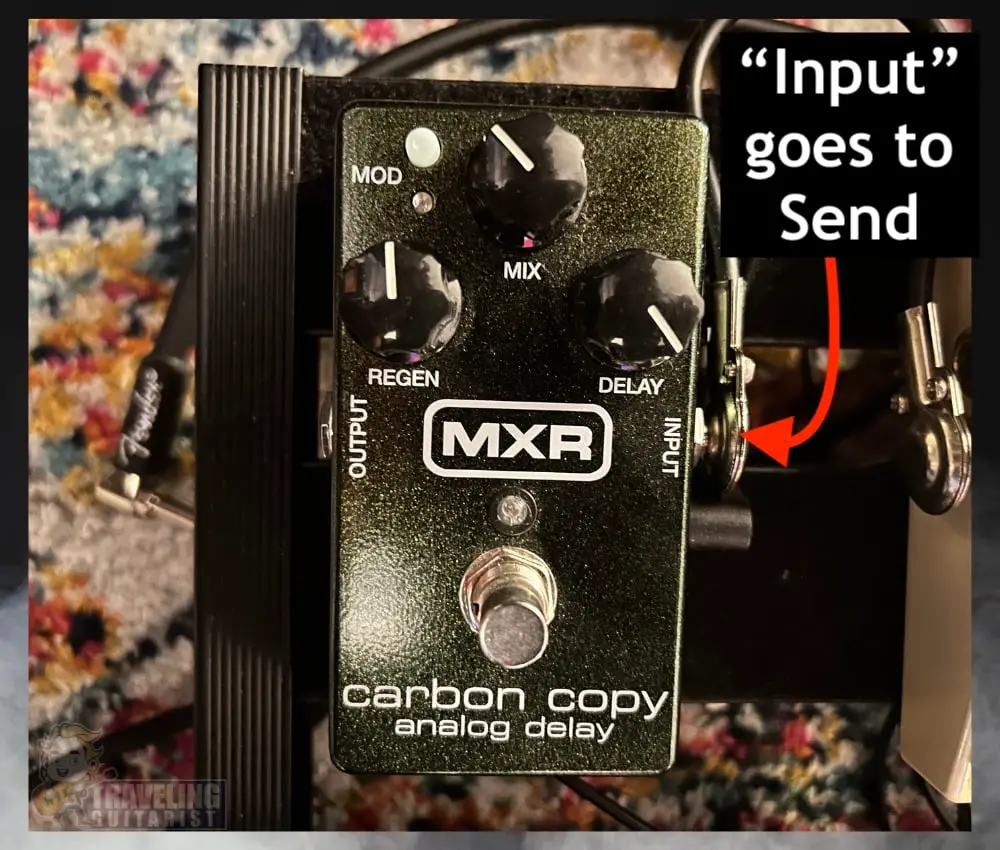
2) Run A Cable From the Pedal’s ‘Input’ to the FX Loop’s ‘Send’

3) Engage the FX Loop Button On Your Amp (If It Has It)
![FX Loop - Where To Put The Looper Pedal In Your Signal Chain [SIMPLE]](https://travelingguitarist.com/wp-content/uploads/2022/04/FX-Loop-Where-To-Put-The-Looper-Pedal-In-Your-Signal-Chain-SIMPLE.jpg)
Not every amplifier has a button like this. Some FX Loop units just work and that’s it. You don’t turn it on or off.
4) Connect The Delay Pedal To Your Power Supply
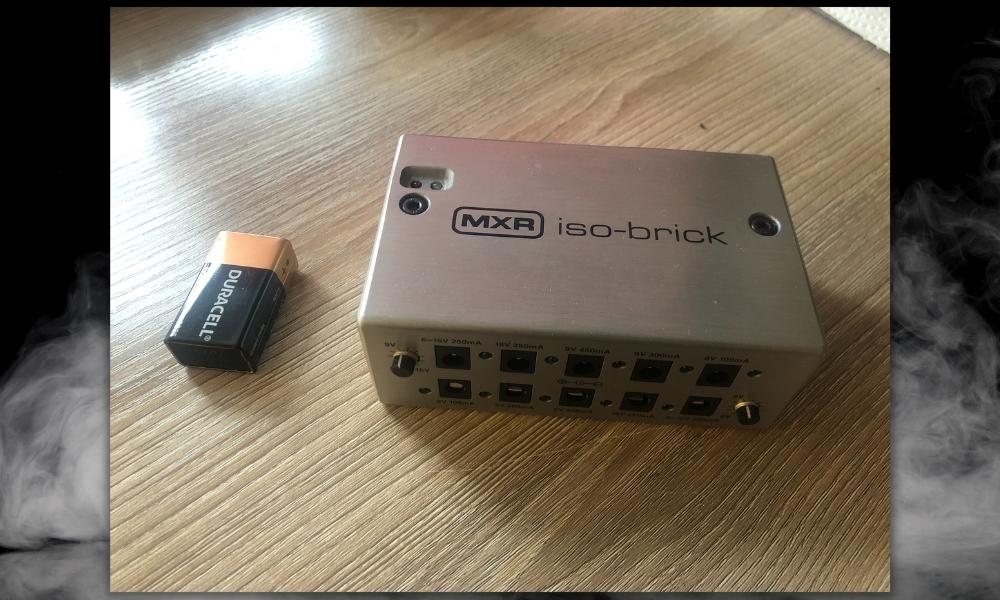
This is what your end result should look like. As long as you have a nice, long cable, you can then place the delay wherever you like, whatever works best for your workflow.
What About When You Have More Than One Pedal in the FX Loop?
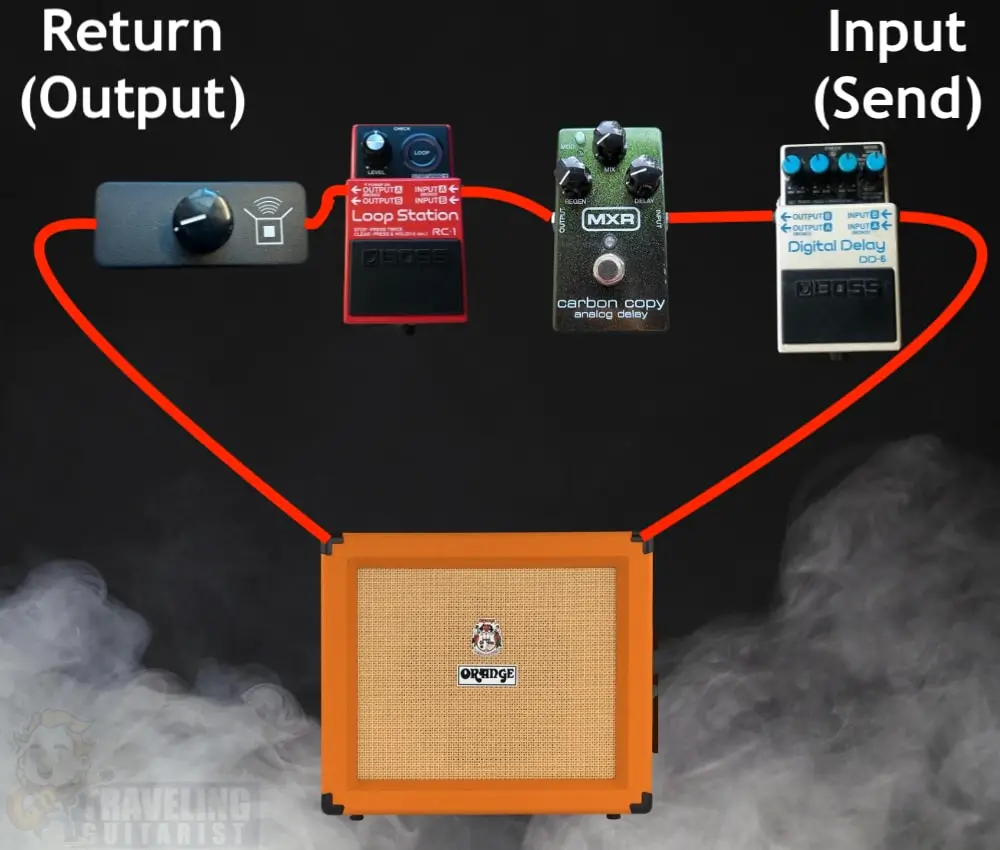
There are some specialty pedals you could have that will complicate how you set things up in your FX Loop, for instance, the volume attenuator and the looper pedal.
1) In case you don’t know, Return is last in the FX Loop and the Send is the first placement.
2) Additionally, the pedals within your FX Loop should follow the guidelines of signal chain placement. In other words, pretend you’re placing them in front of your amp.
Why Putting Delay In Your FX Loop Works The Best
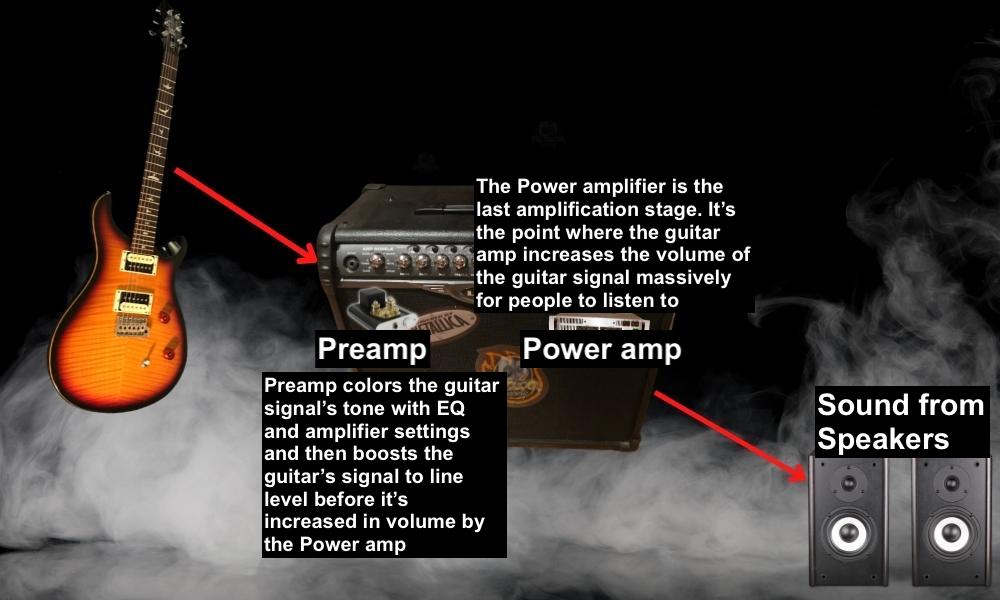
Using an FX loop lets you put your effects units in between the preamp and power amp sections of your amplifier (in a standard tube amp).
By bypassing the EQ and distortion controls of the pre-amplifier, you can send the original, clean signal from the effects unit straight to the amp’s speaker.
In the case of a delay pedal, having it in front of the amp can end up with a muddy, distorted delay. This is because the signal from your delay pedal is going into your amp’s pre-amplifier, and being processed by whatever tone or distortion controls you have going on there.
Bypassing this lets you keep the clean signal from the delay alongside the processed signal from the pre-amplifier, helping keep things a lot cleaner, without your delay repeats coming out distorted.
This is particularly helpful for players who like to use a generally more dirty, distorted tone. It can also help you reduce any tone loss that may occur from a long line of effects in front of the amp – long cables can sometimes result in a degradation of quality in the signal.
But what I love best about using the FX loop is that it simply gives you much more flexibility when it comes to effects routing.
You can pick and choose which effects to have in your normal, in-front pedalboard chain and which to hook up with the FX loop.
This can result in more varied, dynamic and rich tones, over which you as an individual player have a lot more control, letting you create your own distinctive sound, and giving you more versatility in general.
Where To Put Your Delay Pedal If You Don’t Have An FX Loop?
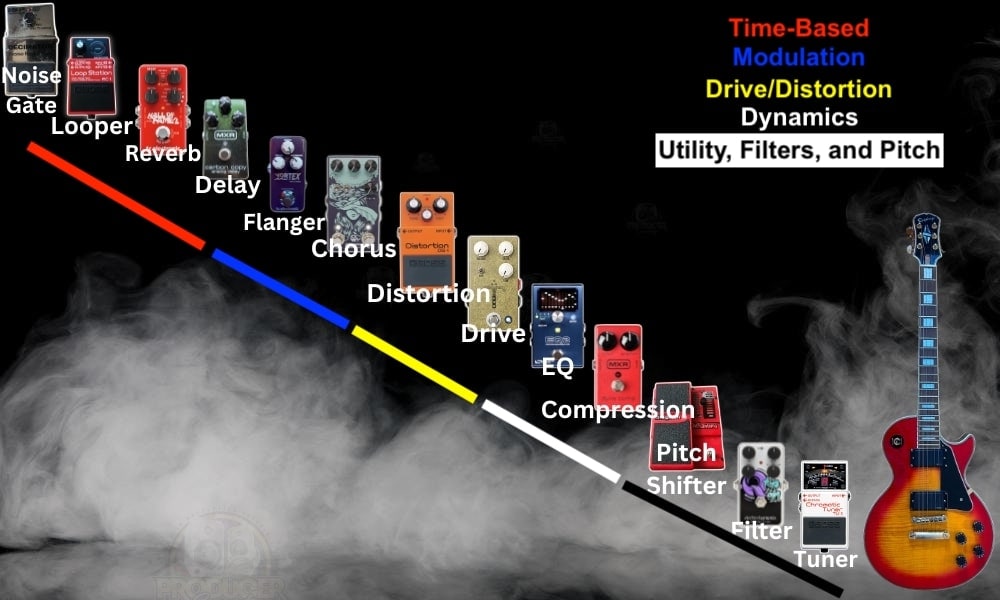
If you’re not using an FX loop, there are a few options for where to hook up your delay pedal in your effects chain, depending on what you’re going for.
In most cases, guitarists will put the delay at the end of their chain, before reverb, and after things like phasers, flangers, and chorus.
In other words, the delay will be the second last in the time-based section of your signal chain. This is probably the most common way to set up a signal chain. If I didn’t have an amplifier with an FX Loop, this is how I would do it.
The reason why you put the reverb after your delay is that you don’t want to multiply the reverb effect with your delay.

 Written By :
Written By :
